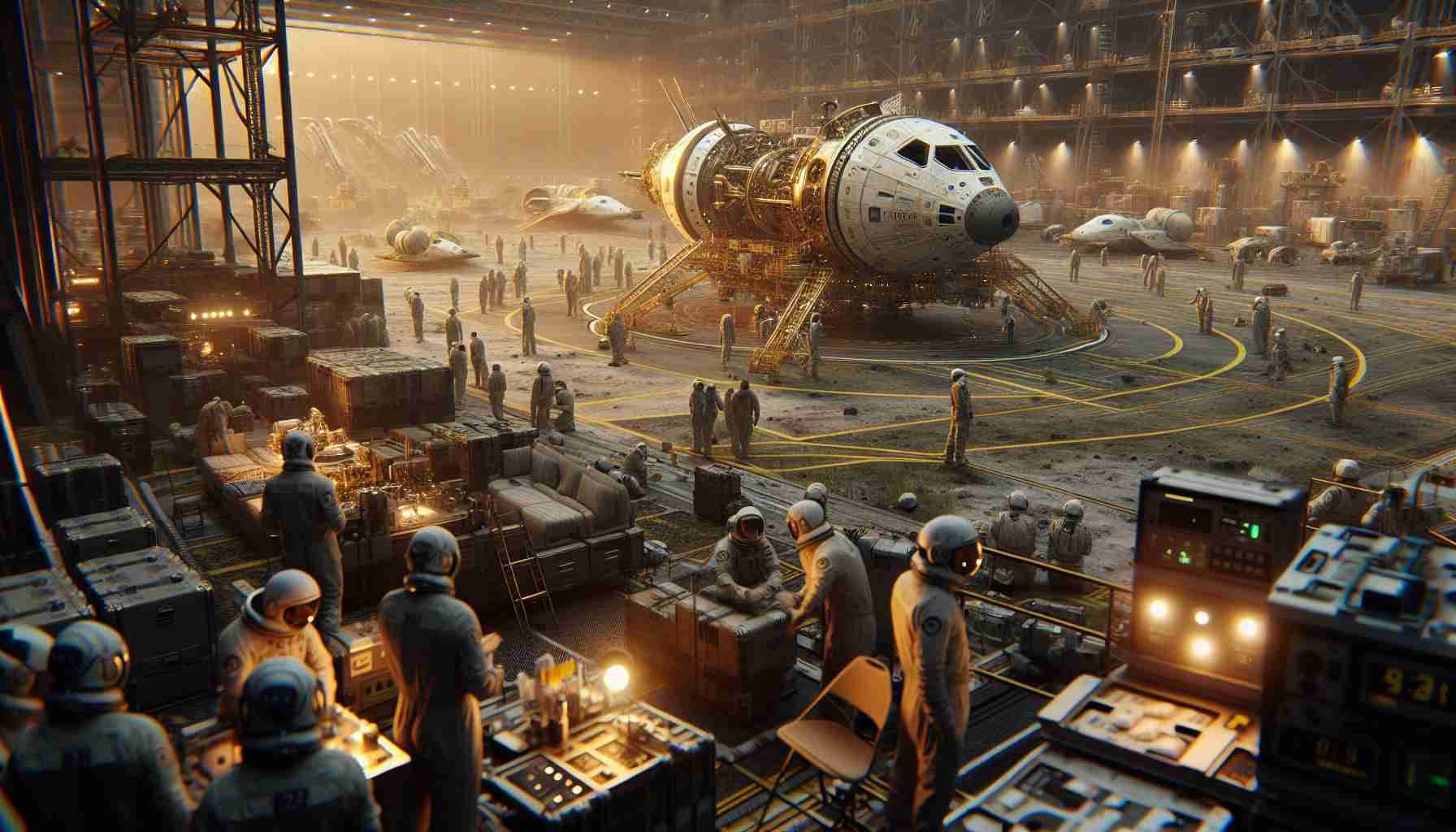NASA’s ambitious Artemis II moon mission is facing mounting challenges as speculation grows over its future, stirred by recent administrative changes. This week, the agency showcased the advancements of the Artemis II Space Launch System (SLS) to journalists, against a backdrop of uncertainty.
The Space Launch System: A Milestone
With Artemis II now delayed until 2026, NASA staged a media event to assert that the core stage of the SLS is ready to be stacked. Astronauts standing before the towering rocket emphasized the wider implications of the mission, with commander Reid Wiseman highlighting that investing in Artemis represents an investment in America’s future.
Setbacks and Reassessments
The mission faced a delay after NASA discovered cracking in the heatshield during the Artemis I test flight. This discovery prompted a comprehensive review of the reentry process. Victor Glover, the mission’s pilot, emphasized their continual updates on these technical challenges and the importance of focusing efforts on a successful Orion flight in 2026.
Political and Corporate Influences
As a new administration approaches, NASA’s leadership could see significant shifts. Jared Isaacman, founder of the SpaceX Polaris Program, is a potential nominee for NASA administrator, raising questions about the role of commercial partners like SpaceX. President-elect Donald Trump’s focus on government efficiency may alter NASA’s funding and objectives, potentially impacting the Artemis program.
Looking Ahead
Despite the hurdles, NASA remains committed to its goals. The Artemis II mission involves a 10-day lunar journey, acting as a precursor to future lunar landings. As preparations continue, stakeholders are keenly aware of the ticking clock against global competitors like China, stressing the urgency of returning astronauts to the moon.
Artemis II Moon Mission: Challenges and Future Prospects Unveiled
NASA’s Artemis II mission, an ambitious project to return humans to the moon, is encountering various hurdles as it progresses. The mission, which aims to pave the way for future lunar landings, is undergoing scrutiny due to recent delays and potential shifts in program leadership and funding.
Innovations in the Space Launch System (SLS)
Despite setbacks, the Space Launch System (SLS), a key component of the Artemis II mission, marks a significant milestone in space exploration. Recently showcased to the media, the SLS represents a culmination of years of technological advancement. The system’s core stage is considered ready to proceed with stacking, highlighted as a critical step towards achieving the mission’s objectives. This readiness serves as a testament to NASA’s commitment to pushing the boundaries of space travel and underscores the importance of continued innovation in the field.
Technical Challenges and Reassessments
The Artemis program’s path has been fraught with obstacles, notably the discovery of heatshield cracks during the Artemis I test flight. These findings have necessitated a thorough review and reassessment of the reentry process, contributing to the mission’s delay until 2026. Astronaut Victor Glover has stressed the critical nature of addressing these technical issues, focusing on ensuring the success of the Orion spacecraft’s return to earth.
The Role of Political and Corporate Dynamics
The Artemis II mission is not just a technical challenge; it is also impacted by political and corporate dynamics. As a new administration is poised to take office, potential leadership changes at NASA could influence the mission’s trajectory. The possibility of Jared Isaacman, a notable figure from the SpaceX Polaris Program, stepping into a leadership role stirs discussions on how commercial partners like SpaceX could reshape NASA’s strategic directions. Furthermore, the incoming administration’s emphasis on government efficiency may result in reassessments of NASA’s objectives and funding, potentially affecting the Artemis program’s future.
Global Competition and Strategic Implications
In the broader context of space exploration, Artemis II stands as a crucial component of maintaining United States leadership in space. With global competitors such as China advancing their own lunar ambitions, the urgency to return astronauts to the moon is palpable. The Artemis II mission, involving a proposed 10-day lunar journey, acts as a crucial stepping stone toward achieving strategic goals in lunar exploration and beyond.
Future Prospects and Sustainability
Looking ahead, NASA remains steadfast in its commitment to the Artemis program’s success. The focus continues to be on sustainable exploration, which means preparing technologies and methodologies for long-term lunar presence and possibly setting the stage for missions to Mars. Despite existing challenges, the potential technological and scientific advancements from the Artemis program are expected to contribute significantly to our understanding of space.
As NASA navigates these waters, the Artemis II mission stands as a beacon of both American ingenuity and the collaborative spirit needed to embark on the next great chapter of human space exploration. For more insights on NASA’s endeavors and progress in space exploration, visit the official NASA website at NASA.







